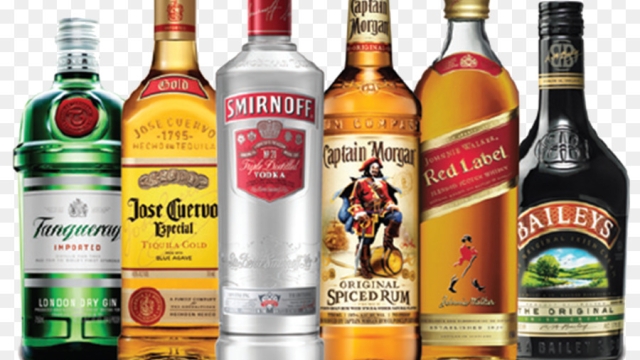Whisky, a spirit that evokes a sense of tradition, craftsmanship, and mystery. There is something enchanting about this amber liquid that has captivated connoisseurs and casual drinkers alike for centuries. From its origins shrouded in the mists of time to its intricate production processes, whisky is truly a beguiling beverage that holds stories and secrets within every drop.
As you take your first sip, the complexity of flavors dances on your palate, tantalizing your taste buds with notes of rich caramel, smoky peat, and velvety vanilla. The alchemy of nature and human skill come together in each bottle, as the carefully selected grains, the water from hidden springs, and the patient aging in oak casks all contribute to the exquisite character of the whisky.
But it’s not just the taste that makes whisky so alluring. There is a sense of heritage and tradition that surrounds this spirit, resurrecting the past with every glass. Whether it’s the distinct regional styles of Scotch whisky, the bold and robust American bourbons, or the smooth elegance of Irish whiskey, each variety tells a tale of its own. From the distilleries nestled in the picturesque Scottish highlands to the historic bourbon trails of Kentucky, whisky is a journey into the heart and soul of a nation.
In this article, we will peel back the layers of the whisky world, delving into its history, production methods, and the unique characteristics that set each variety apart. Join us as we unravel the mystique of whisky, unlocking its secrets and gaining a deeper appreciation for this liquid gold that has garnered a devoted following across the globe. It’s time to raise our glasses and embark on an exploration of the enigmatic world of whisky.
History of Whisky
Whisky, a beloved spirit enjoyed by many around the world, has a fascinating history that spans centuries. From its humble beginnings to becoming a renowned beverage, whisky holds a special place in the hearts of connoisseurs and casual drinkers alike.
The origins of whisky can be traced back to ancient civilizations, with the production of distilled beverages dating back to as early as the 3rd century. However, it was the Celtic and Gaelic peoples of Ireland and Scotland who truly refined the craft of whisky-making.
In Ireland, monks are credited with introducing the art of distillation to the region, using it not only for medicinal purposes but also for the sheer enjoyment of the spirit. As time went on, the distillation techniques evolved, resulting in the creation of what we know today as Irish whiskey – known for its smooth and distinctive flavor profile.
Meanwhile, over in Scotland, whisky production was gaining momentum during the Middle Ages. The ideal climate and abundance of barley made Scotland the perfect place for whisky-making. It was in the rugged Highlands and remote islands that the Scotch whisky industry flourished, becoming renowned for its rich and complex flavors derived from local ingredients and traditional distilling methods.
Throughout history, whisky has encountered various obstacles, including periods of prohibition, taxation, and changing consumer preferences. However, its enduring popularity has allowed the industry to adapt and thrive, with distilleries producing a wide range of whiskies to cater to diverse tastes.
Today, whisky remains a symbol of craftsmanship and tradition. Whether you prefer the peaty and smoky flavors of Islay malts or the smooth and caramel notes of bourbon, there is a whisky out there to suit every palate. So, raise your glass and join us on a journey through the enigmatic world of whisky as we further explore its secrets and intricacies.
The Distillation Process
Whisky is crafted through a meticulous distillation process that brings out its character and complexity. This intricate procedure involves several stages, each contributing to the final product’s distinct taste and aroma.
Malting and Mashing: It all begins with malted barley, which is soaked in water and allowed to germinate. Once germination is complete, the barley is dried and ground into a coarse flour known as grist. The grist is then mixed with warm water to extract the sugars, creating a sweet liquid known as wort. This wort serves as the foundation for whisky production.
Fermentation: The wort is transferred to large vessels called washbacks, where yeast is added. Over the course of a few days, the yeast converts the sugars in the wort into alcohol, producing a liquid known as wash. The wash resembles a strong beer with an alcoholic content of around 6-8%.
Distillation: The wash is distilled in traditional pot stills, a process that separates alcohol from impurities and concentrates the flavors. Distillation occurs in two stages: the first distillation takes place in a wash still, and the resulting liquid, known as low wines, is then distilled again in a spirit still. These stills are vital in shaping the whisky’s character, as their design and operation influence the final product’s flavor profile.
By carefully controlling the distillation process, distillers select the desired elements, including the evaporation of unwanted compounds known as congeners. The resulting spirit, commonly referred to as "new make spirit," is colorless and possesses a high alcohol content. It is the raw foundation from which whisky gains its unique identity.
The distillation process is a vital step in whisky production, where masterful craftsmanship and attention to detail come to life. Each distillery follows its own unique methods, resulting in a diverse range of whiskies that captivate enthusiasts around the world.
Types and Flavors of Whisky
Whisky, also known as whiskey in some countries, is a diverse and fascinating spirit that offers a wide variety of types and flavors to suit different palates. Let’s take a closer look at some of the most prominent categories of whisky and the flavors they bring to the table.
Scotch Whisky: With its rich history and distinct flavors, Scotch whisky holds a special place in the hearts of whisky enthusiasts worldwide. Made primarily in Scotland, this whisky typically undergoes a process of aging in oak barrels, which imparts unique characteristics. From the smoky and peaty notes of Islay whiskies to the smooth and fruity flavors of Highland whiskies, each region in Scotland has its own signature style.
Bourbon: Hailing from the United States, bourbon is a type of whisky that has specific regulations governing its production. It must be made from at least 51% corn and aged in new charred oak barrels, giving it a caramelized sweetness and a rich, full-bodied taste. Bourbon is known for its smoothness and can feature flavors like vanilla, caramel, and oak, making it a popular choice for both sipping and mixing into cocktails.
Irish Whiskey: Irish whiskey, known for its smoothness and approachability, has a character all its own. Made in Ireland, this whisky is typically triple-distilled and often aged in a variety of casks, resulting in a light and easy-drinking spirit. It offers flavors of honey, malt, and a subtle hint of fruitiness that sets it apart from other whisky styles.

Hibiki Whiskey
Whether you prefer the robust and complex flavors of Scotch whisky, the sweetness and depth of bourbon, or the smoothness and lightness of Irish whiskey, the world of whisky has something to offer every taste. So grab your favorite glass, savor the aroma, and embark on a journey to discover the myriad wonders of this beloved spirit.

